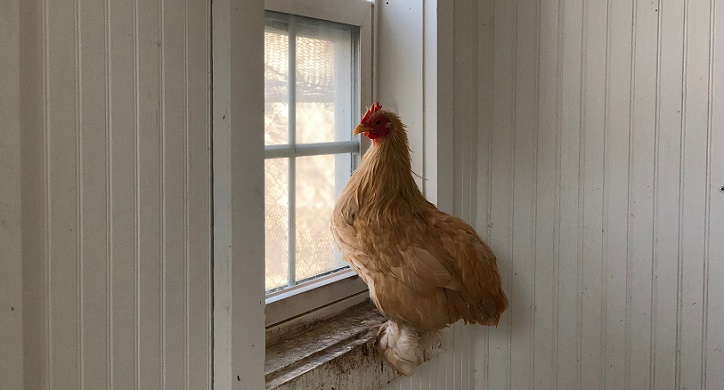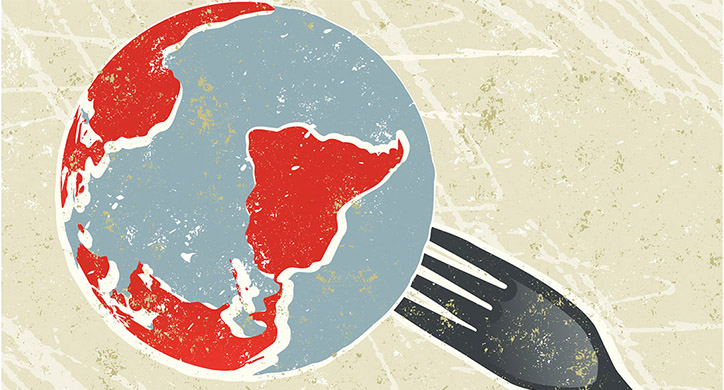This podcast is based on this post.
All right, welcome back everyone. Ready for another deep dive?
Definitely always up for a good deep dive.
Awesome. So, today we’re tackling something that feels, I don’t know, super basic, but also kind of mysterious.
Oh, like why?
Health. I mean, we all want it obviously. But what does it actually mean to be healthy? It’s a big question.
It really is. And it gets even more complicated when you think about this. Uh the US spends something like $5 trillion every year on healthcare.
Crazy, right? But are we really the healthiest nation out there? I’m not so sure.
Right. You’d think with all that spending, we’d be like the gold standard of health, which is exactly why this article, uh, what is health totally caught my eye. That one too is pretty interesting.
Goes way beyond just eating your veggies and hitting the gym. You know, it even suggests there are some like unexpected ways to measure how healthy we are.
Yeah. And that’s important because even people who seem to be doing all the right things can still have health issues. So, what’s this article say? Is it like whole lifestyle thing?
That’s exactly it. It’s like health as a way of life, a mindset almost.
And get this, it uses these three kind of unusual measurements to get a more complete picture.
Oh, okay. I’m intrigued. What are they? Laid on me.
All right, get ready. V2 max, grip strength, and the sit and rise test.
Hm, interesting. Some of those ring a bell, but honestly, can those really tell us how healthy we are? Like really?
That’s what I was wondering, too. So, let’s break them down one by one. Maybe we’ll be surprised. Starting with V2 max. Any idea what that even is?
V2 max. Well, basically, it measures how much oxygen your body can use when you’re exercising. Like really pushing yourself.
So, like how efficiently your lungs and heart are working together.
Exactly. The more oxygen you can use, the better shape your heart and lungs are in. And studies have shown that a higher V2 max is actually linked to, well, living longer. The article mentioned this one study that followed over a 100,000 people. And guess what? Those with higher V2 max scores had a lower risk of dying.
Wow. Okay, now you’ve got my attention.
So, how do you even measure this V2 max thing? Do you have to like go to a lab and run on a treadmill with tubes and stuff?
Well, yeah, that is the most accurate way. You’re right. But some fitness trackers are getting pretty good at estimating it these days, too. And the really cool part, you can actually work on improving your V2 max.
Oh, for real? I’m all ears. How do you do that?
High intensity interval training or HIIT is one of the best ways. You know those workouts where you’re going all out for short bursts and then you get a little break.
Oh, yeah. I’ve heard about those. They sound intense. But what makes them so good for V2 max specifically?
Well, because they push your cardiovascular system to the max. Literally. Like boot camp for your heart and lungs. makes them stronger and more efficient. And get this, there’s research that suggests HIIT can even help your brain function, too.
Seriously, that’s wild. Okay, I am definitely intrigued by this whole V2 max thing now. All right, let’s move on to the next one. This uh grip strength measurement. This one honestly has me a little stumped. How how strong your grip is tell you anything about your overall health? It just seems so random.
I know it does seem a bit out there at first glance, right? But grip strength can actually tell you a lot about your muscle mass and strength, particularly in your upper body.
And think about it, we use our grip for so many things. Like carrying groceries, opening jars, you know, even just shaking someone’s hand.
Yeah. We totally take it for granted.
Exactly. And this is where it gets really interesting. Some studies have actually linked a decline in grip strength to an increased risk of health problems as we age.
Like what kind of problems?
Things like heart disease and even some types of cancer, believe it or not.
Whoa. Okay. Okay. I did not see that coming. I guess weaker grip strength could be a sign that someone’s maybe not as active or they’re losing muscle mass which could lead to all sorts of other issues. Right. Exactly. It really shows how different aspects of our health are all connected in ways we might not even realize. Oh, and the article even gives some like target numbers for grip strength based on your age. For example, they say a 40-year-old woman should be able to hang from a bar for like a minute and a half.
A minute and a half. I don’t even know if I could do that. All right. This deep dive is making me want to hit the gym like right now. Okay, so you’ve got one more measurement to cover, right? The sit and rise test. What is that exactly and how does that relate to health?
Okay, so it’s actually a pretty simple test. You just sit down on the floor and then stand back up. The catch is you can’t use your hands or arms to help you.
I feel like that would be easy for some people and really tough for others. What makes it so important?
Well, it’s a really good way to assess your mobility and flexibility, which are super important for, you know, staying independent and pre ending falls as we get older. And there was this study, it’s mentioned in the article, that found something pretty amazing. People who had trouble with the sit and rise test actually had lower survival rates over time.
So, being able to move around easily is actually linked to a longer life.
That really makes you think about all the time we spend like sitting at desks and looking at screens.
Does, doesn’t it? This test is kind of like a sneak peek into your overall uh what’s the word? Muscular skeletal health. It shows how well you’ll be able to get around as you get older. And speaking of aging, the article brings up this really big question. How do we age well and stay healthy for as long as possible?
That is the million dollar question, isn’t it? And I’m guessing this article suggests that these measurements can help us do just that.
You got it. It’s all about getting a more complete picture of our health beyond just like weight or blood pressure. But it also points out that health isn’t just about the physical stuff. Our mental and emotional well-being play a huge role too.
That’s true. I mean, you can be physically fit but still struggle with things like stress or anxiety. So, how does the article address that side of things?
Well, it really emphasizes, you know, having a positive mindset, managing stress,
and having those good social connections. It even suggests those things can help boost your immune system, you know, protect you from chronic diseases and all that.
Wow. Really? So, it’s not just what you eat and how much you exercise. It’s about how you think and how you connect with other people too.
Exactly. It’s all connected, right? Physical, mental, emotional. You can’t really separate them.
It’s like a holistic view of health, taking care of the whole person.
Exactly. And that kind of brings us back to those three measurements we were talking about. They’re a good way to like check in with your physical health and maybe see where you can improve, you know.
Okay. I like that. So, let’s get practical for a minute. If someone wants to, you know, boost their scores on those measurements, where should they start?
Well, with V2 max, remember that’s all about how well your body uses oxygen during exercise. And like we said earlier, high intensity interval training, that HIIT stuff can be a real gamechanger.
But for someone who’s never done HIIT before, it seem a little daunting. Any tips for easing into it?
Absolutely. You don’t have to go all out right away. Start with like a shorter workout, maybe 10 or 15 minutes, and slowly increase the intensity and how long you do it as you get more fit. And you can always modify the exercises too.
Like instead of sprinting, maybe you do a fast walk or a light jog.
Right. Right. So, it’s all about finding that starting point that’s challenging but not like impossible and then just pushing yourself a little further each time.
Exactly. And listen to your body. Don’t be afraid to take rest days when you need them.
Good advice. Now, what about grip strength? How can we, you know, pump up those numbers?
There are a few easy exercises that can really make a difference like the dead hang. You just find a bar or something you can grip comfortably and hang there as long as you can. Oh,
Okay. Sounds simple enough.
It is, but trust me, it’s a great workout for your forearms and grip.
How long should someone aim to hang for?
Start with what you can do. Maybe like 10 or 15 seconds and then gradually increase the time. And you can also try different grips like overhand, underhand. Just mix it up a little.
Yeah, variety is the spice of life even when you’re hanging from a bar. Any other exercises?
Farmers carries are another Another great one, farmer’s carries.
What’s that?
It’s just like it sounds. Pick up a weight in each hand and walk with it. You can use dumbbells, kettle bells, even heavy grocery bags if you want. And it works your grip, but also your core, shoulders, back, even helps with your posture.
I’m definitely adding farmers carries to my workout routine. All right, last but not least, the sit and rise test. That one seems like it’s all about flexibility and mobility, right? Any tips for improving in those areas.
Yoga and Pilates are both great for that. Lots of movements that challenge your balance and flexibility and all that.
Yeah, I’ve tried yoga before and I always feel so much better afterward, but it can be intimidating for beginners. What would you say to someone who wants to try it but doesn’t know where to start?
Oh, there are so many beginner friendly classes these days. You can even find videos online that are specifically for the sit and rise test.
And you don’t have to be a yoga master to benefit either. Just taking a few minutes each day to stretch can make a huge difference.
So, it’s all about finding what works for you and making it a regular part of your routine.
Exactly. And that actually brings up a really important point from all of this. You don’t have to make these big crazy changes to live a healthier life, right?
It’s about those small sustainable changes. You know, the little things you can actually stick with and building those habits over time.
Yeah, that’s really encouraging. So, we’ve covered the physical side of things pretty well, but the article also talked about mental and emotional well being. any practical tips for you know taking care of those aspects of health?
One of the simplest things but also one of the most powerful is mindfulness like meditation, deep breathing, even just taking a few minutes to appreciate the little things that can help reduce stress so much and it’s good for your overall well-being.
Oh yeah. Just slowing down and being present in the moment.
Exactly. And another big thing for mental and emotional health is nurturing your social connections, spending time with people you care about. Having meaningful conversations, being part of a supportive community, that can make a huge difference in how happy and resilient you are.
That makes sense, but it’s easy to let those connections slip, especially when life gets busy. Any tips for strengthening those social ties?
Just make an effort to reach out to people, even if it’s just a quick call or text. Join a club or group that interests you. Volunteer. There are tons of ways to connect with others.
Those are great ideas. So, we’ve covered a lot in this deep dive. We’ve talked about those surp rising measurements of health. We’ve discussed practical strategies for improving our physical and mental well-being and we’ve highlighted that, you know, holistic approach. What’s the main takeaway you want listeners to walk away with?
It’s about realizing that health isn’t like, you know, it’s not a finish line you cross. It’s a journey. It’s something you keep working on.
It really is. And it’s different for everyone. There’s no one right way to be healthy.
Exactly. It’s not about being perfect. It’s about finding what works for you. Making choices that make you feel feel good, you know, in every way.
Totally. It’s about pushing yourself, but also being kind to yourself along the way.
Yeah, for sure. And remembering that health is about so much more than how you look. It’s about how you feel physically, mentally, emotionally. It’s about having the energy to do the things you love.
It’s about feeling alive, right? Having that spark. And I think those three measurements, the V2 max, grip strength, sit and rise test, they can really help us see where we’re at on that journey.
Totally. They give us something concrete to track. But it’s not about obsessing over the number. numbers. It’s about using them as a guide to help us live better lives, healthier, and happier.
That makes a lot of sense. Until next time, everyone, stay curious.


 Although no federal law prohibits foreign ownership of private U.S. farmland, legislators at both the federal and state levels have proposed laws to monitor, restrict or prohibit such purchases if deemed to be counter to the best interest of their constituents.
Although no federal law prohibits foreign ownership of private U.S. farmland, legislators at both the federal and state levels have proposed laws to monitor, restrict or prohibit such purchases if deemed to be counter to the best interest of their constituents.



 76 adults with low vitamin D consume tomato soup daily for three weeks, each serving made from tomatoes edited to accumulate provitamin D3, which converts in the body to vitamin D3.
76 adults with low vitamin D consume tomato soup daily for three weeks, each serving made from tomatoes edited to accumulate provitamin D3, which converts in the body to vitamin D3.





 While U.S. soybean growers have had to deal with the adverse effects of the on-going trade dispute with China, Brazilian growers have stepped into the fill that gap.
While U.S. soybean growers have had to deal with the adverse effects of the on-going trade dispute with China, Brazilian growers have stepped into the fill that gap.



 Perhaps of surprise to many consumers, tariffs on imports of aluminum play an important role in the potential price run-up for beer drinkers and other consumers.
Perhaps of surprise to many consumers, tariffs on imports of aluminum play an important role in the potential price run-up for beer drinkers and other consumers. Two of the most significant suppliers of imported beer – Canada, and even more so Mexico – enjoy a special exemption from the brunt of the tariff costs because of pre-existing trade agreements with the United States.
Two of the most significant suppliers of imported beer – Canada, and even more so Mexico – enjoy a special exemption from the brunt of the tariff costs because of pre-existing trade agreements with the United States. In this sample, the disparity between domestic and imported averaged roughly $3 per 12-pack at $2.96.
In this sample, the disparity between domestic and imported averaged roughly $3 per 12-pack at $2.96.











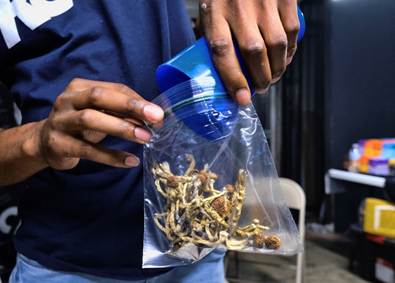
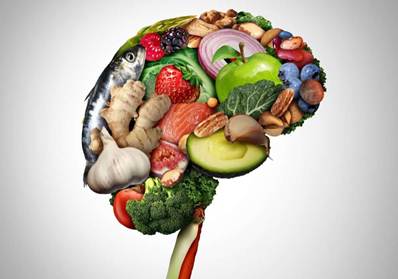


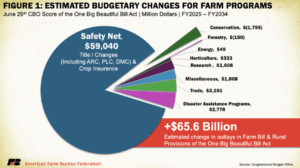







 These technologies don’t just reduce environmental harm—they also improve operational efficiency.
These technologies don’t just reduce environmental harm—they also improve operational efficiency.


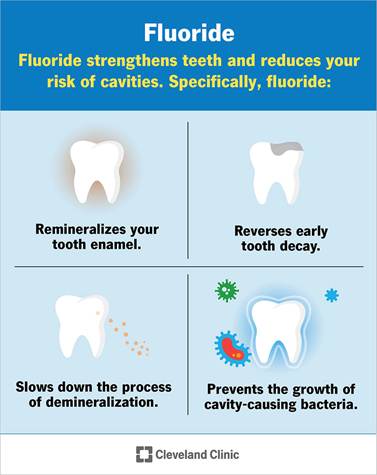 “
“

 Eligibility and the amount of assistance from SNAP are based on gross and net monthly income. In most cases,
Eligibility and the amount of assistance from SNAP are based on gross and net monthly income. In most cases, 






 During the 2022 E. coli outbreak in leafy greens,
During the 2022 E. coli outbreak in leafy greens, 


 This allows agencies to prioritize inspections based on actual risk, not just routine schedules.
This allows agencies to prioritize inspections based on actual risk, not just routine schedules.

 RFK is right: so many Americans are unhealthy.
RFK is right: so many Americans are unhealthy.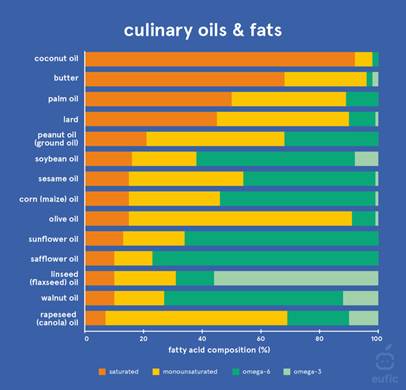










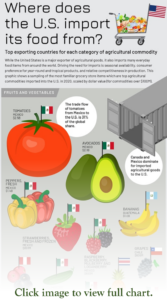


 It doesn’t just kill weeds; it kills anything green, including farm crops such as corn, soybeans, cotton, canola, sugar beets, and alfalfa. These crops have all been genetically modified so that the farmer can spray glyphosate after the crop emerges from the ground and kill the weeds, but not the crop.
It doesn’t just kill weeds; it kills anything green, including farm crops such as corn, soybeans, cotton, canola, sugar beets, and alfalfa. These crops have all been genetically modified so that the farmer can spray glyphosate after the crop emerges from the ground and kill the weeds, but not the crop.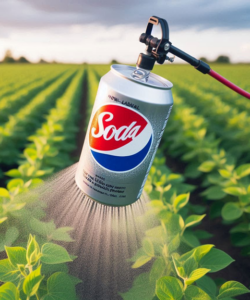
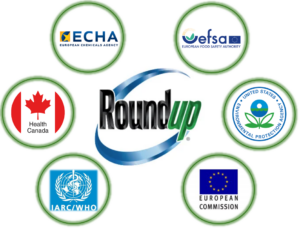
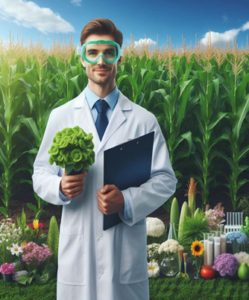 While there were different views on its effect on soil health, all agreed that it is the least toxic of the herbicides on the market.
While there were different views on its effect on soil health, all agreed that it is the least toxic of the herbicides on the market.
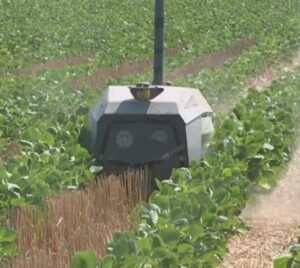 One farmer invented
One farmer invented 
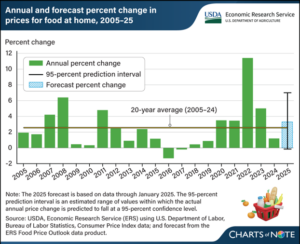
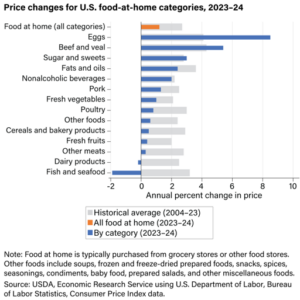 Mostly I look for sales. If it’s a good deal, that’s what we eat.
Mostly I look for sales. If it’s a good deal, that’s what we eat.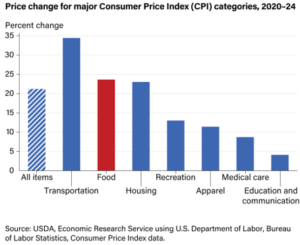 What do you think? Of course they are going to keep going up. Nothing I can do about that.
What do you think? Of course they are going to keep going up. Nothing I can do about that. 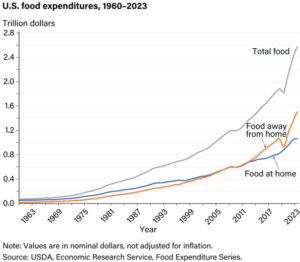 We’ll go out on weekends now and then, but not during the week. And we try to leave the kids home when we do. That saves us a lot of money.
We’ll go out on weekends now and then, but not during the week. And we try to leave the kids home when we do. That saves us a lot of money. 
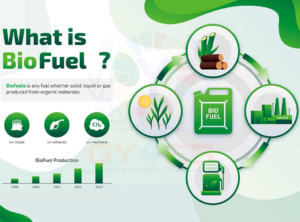
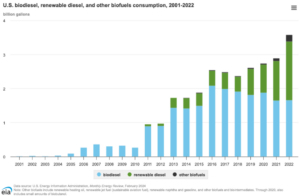
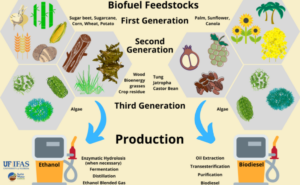
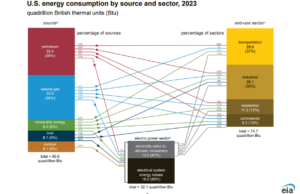
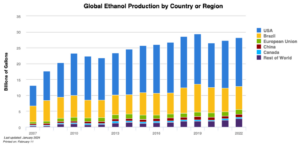 In 2023, over
In 2023, over 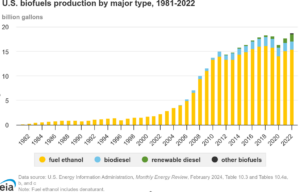

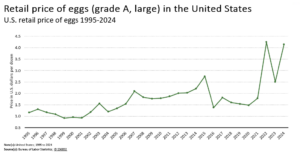
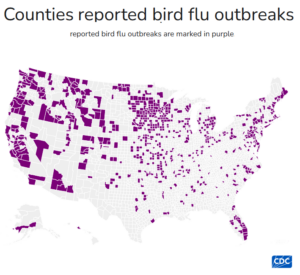
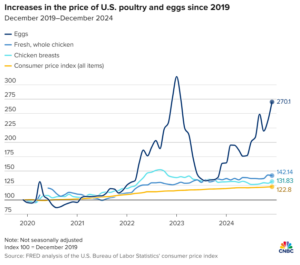
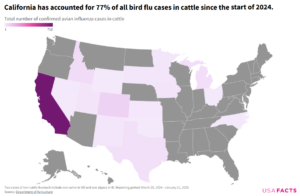
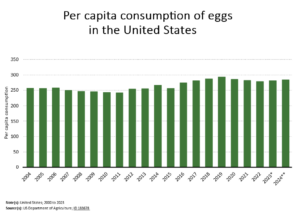
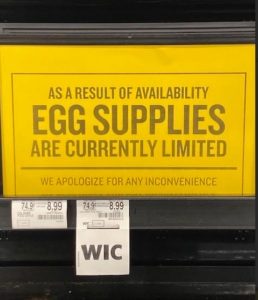 A local supermarket worker described the retail situation in simple terms: “Eggs come in on Friday’s truck. By Monday, they are pretty much gone.”
A local supermarket worker described the retail situation in simple terms: “Eggs come in on Friday’s truck. By Monday, they are pretty much gone.”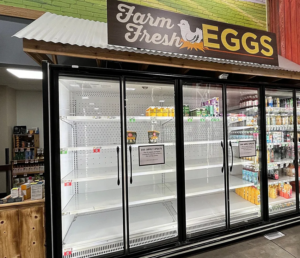

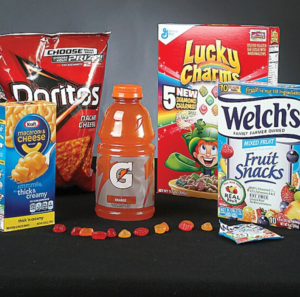 The FDA’s decision to act on Red Dye No. 3 after decades of inaction may signal a shift towards more proactive regulation of food additives.
The FDA’s decision to act on Red Dye No. 3 after decades of inaction may signal a shift towards more proactive regulation of food additives.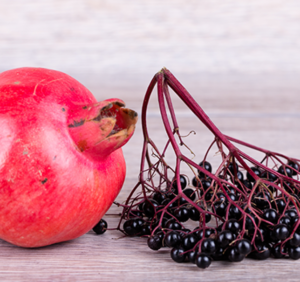 There are many substitutes for Red Dye No. 3, such as beet juice, purple sweet potato extract, red cabbage extract, carmine, and pomegranate juice. These natural substitutes align with growing consumer preferences for clean-label ingredients. After all, many of us would rather consume pomegranate juice in Jell-o than red dye.
There are many substitutes for Red Dye No. 3, such as beet juice, purple sweet potato extract, red cabbage extract, carmine, and pomegranate juice. These natural substitutes align with growing consumer preferences for clean-label ingredients. After all, many of us would rather consume pomegranate juice in Jell-o than red dye.






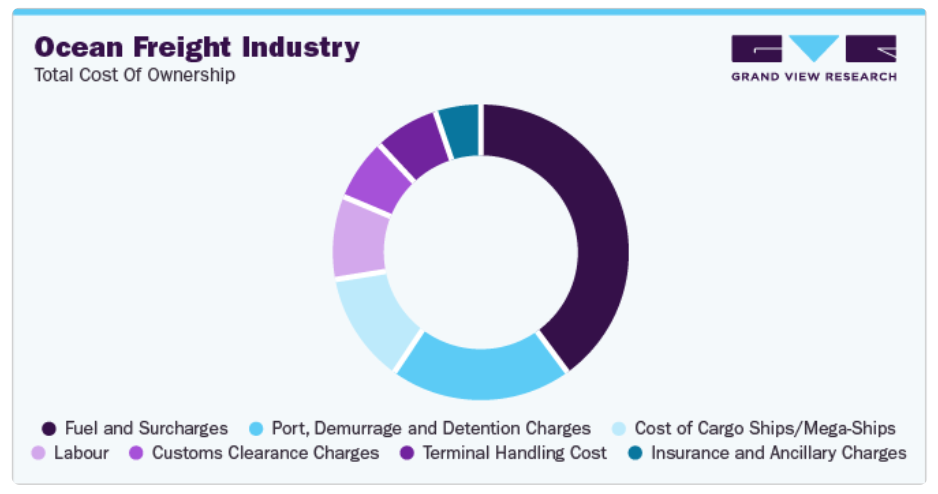









 It also illustrates the systemic inefficiencies in food supply chains, from overproduction and spoilage during transport, to the rejection of perfectly good produce due to cosmetic imperfections.
It also illustrates the systemic inefficiencies in food supply chains, from overproduction and spoilage during transport, to the rejection of perfectly good produce due to cosmetic imperfections.

 Peter Attia, MD, who wrote Outlive: The Science and Art of Longevity, points to VO2 max as the best predictor of longevity.
Peter Attia, MD, who wrote Outlive: The Science and Art of Longevity, points to VO2 max as the best predictor of longevity.

 Hanging from a bar measures your grip strength, which measures your overall muscle ratio – a good indicator of overall fitness.
Hanging from a bar measures your grip strength, which measures your overall muscle ratio – a good indicator of overall fitness.


 Spinach:
Spinach: 

 As for the salad…
As for the salad…
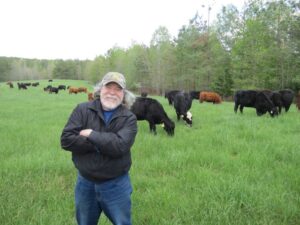
















 You wonder: are your children charging too much? So you go back and encourage them to drop their price to $1.00, knowing that at least they should make $25.00 for the day. This will take most of the summer, but an iPhone is still in their future. Life is good.
You wonder: are your children charging too much? So you go back and encourage them to drop their price to $1.00, knowing that at least they should make $25.00 for the day. This will take most of the summer, but an iPhone is still in their future. Life is good.












 We’re still without our long-overdue
We’re still without our long-overdue 
 All-natural
All-natural 








 While protein can help you feel full and satisfied, consuming more protein than your body needs doesn’t magically become muscle…
While protein can help you feel full and satisfied, consuming more protein than your body needs doesn’t magically become muscle…






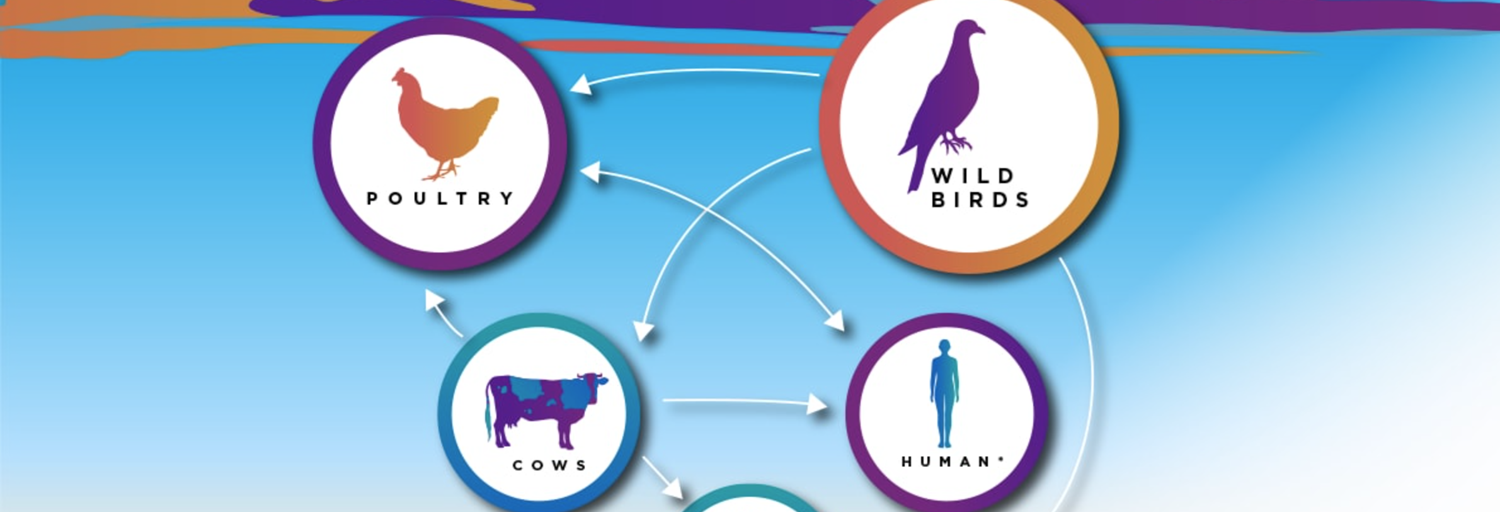




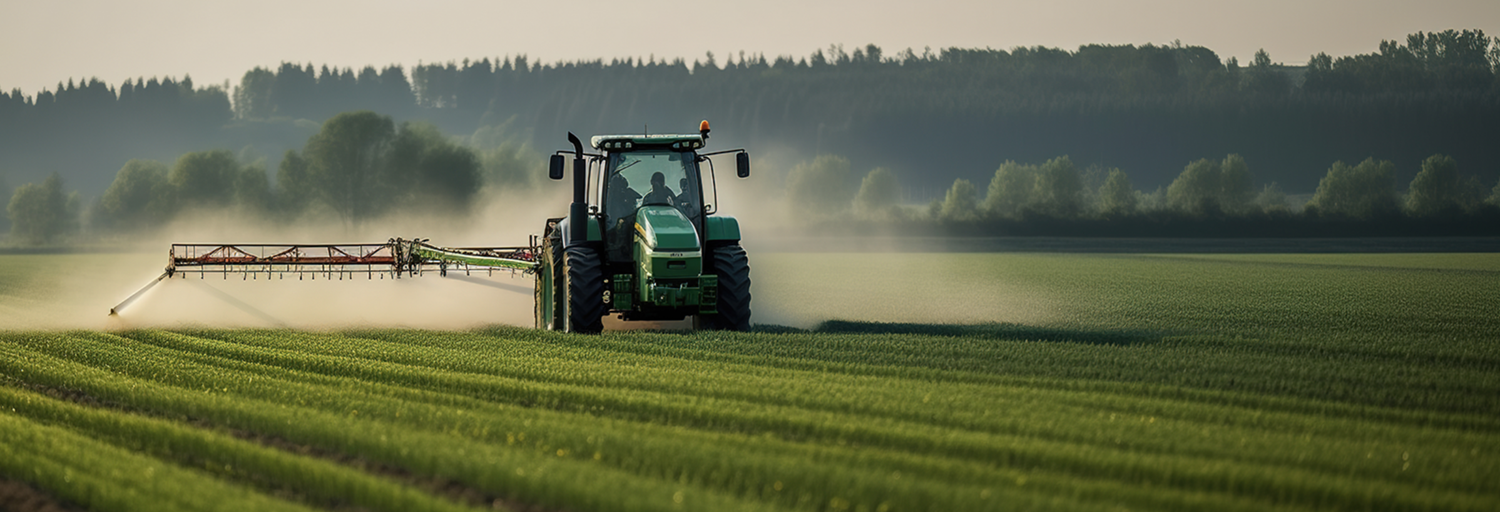
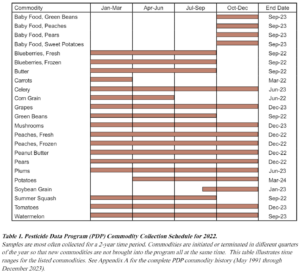




 Moving to vehicles not dependent on fossil fuels is a noble objective. But once again, the reality is that such a transformation in a system as large as the U.S. food system will be an expensive proposition. The more rapid the required conversion, the higher the risk of short-term adverse effects on the producer bottom-line.
Moving to vehicles not dependent on fossil fuels is a noble objective. But once again, the reality is that such a transformation in a system as large as the U.S. food system will be an expensive proposition. The more rapid the required conversion, the higher the risk of short-term adverse effects on the producer bottom-line.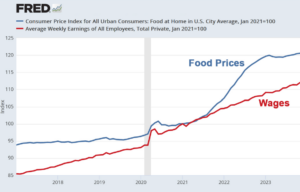








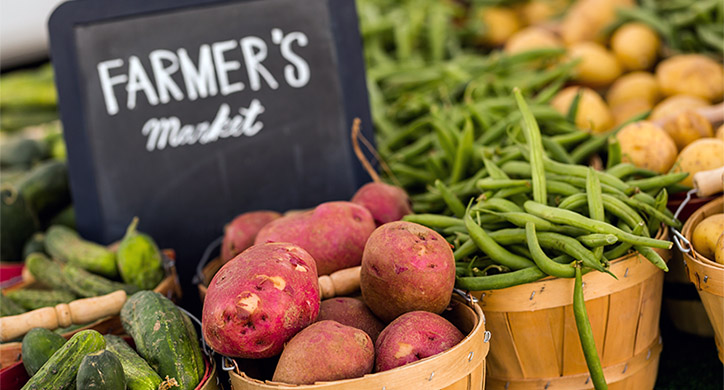
 An additional benefit of these direct-to-consumer venues is when consumers gain a better understanding of where their food comes from, and farmers can meet the people purchasing and enjoying the fruits of their labor.
An additional benefit of these direct-to-consumer venues is when consumers gain a better understanding of where their food comes from, and farmers can meet the people purchasing and enjoying the fruits of their labor.




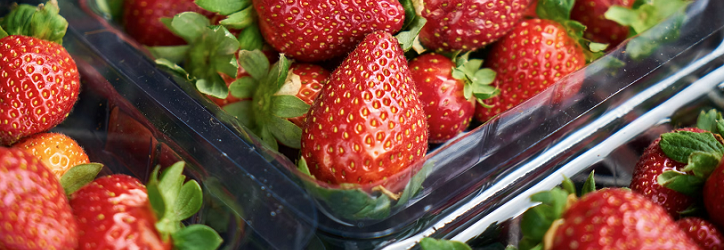




 On the other end of the packaging spectrum is highly complex, multi-layered packaging. Think that organic applesauce pouch or shelf-stable oat milk is recyclable?
On the other end of the packaging spectrum is highly complex, multi-layered packaging. Think that organic applesauce pouch or shelf-stable oat milk is recyclable?


 Better still, ask farmers in Sri Lanka about the 2021 flash-cut to organic farming. Without available practical options to replace commercial fertilizers,
Better still, ask farmers in Sri Lanka about the 2021 flash-cut to organic farming. Without available practical options to replace commercial fertilizers, 
 It’s simple: the world needs fertilizers to have a prayer of meeting the food needs of a growing world. It needs those fertilizers most in the parts of the world that can least afford them, and places where the alternatives to commercial fertilizers are most lacking.
It’s simple: the world needs fertilizers to have a prayer of meeting the food needs of a growing world. It needs those fertilizers most in the parts of the world that can least afford them, and places where the alternatives to commercial fertilizers are most lacking.























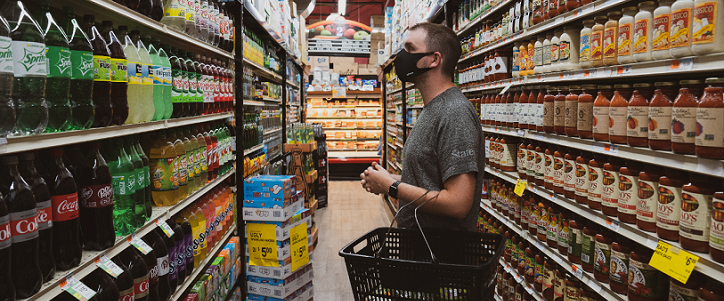


 We elected to continue that work by seeking current price information for the same 15-item food basket, but with data from the Northeast, mid-Atlantic, deep South, upper Midwest, Gulf Coast, Mountain region, and West Coast.
We elected to continue that work by seeking current price information for the same 15-item food basket, but with data from the Northeast, mid-Atlantic, deep South, upper Midwest, Gulf Coast, Mountain region, and West Coast.







 While the focus on climate change comes as no surprise, the farm community anxiously awaits some sign of the approach to be taken. Farm leaders urge policymakers to think in terms of carrots rather than sticks. That is, they note that the farm community by and large is supportive of the broad effort to act responsibly on matters that affect the climate, and the environment.
While the focus on climate change comes as no surprise, the farm community anxiously awaits some sign of the approach to be taken. Farm leaders urge policymakers to think in terms of carrots rather than sticks. That is, they note that the farm community by and large is supportive of the broad effort to act responsibly on matters that affect the climate, and the environment.
 Continuing economic challenges from the pandemic, coupled with a generally more ambitious agenda of government initiatives, mean an almost certain review and revision of tax laws. It will likely involve examining a range of tax policies, including capital gains, gift taxes, inheritance taxes, accounting rules, and more.
Continuing economic challenges from the pandemic, coupled with a generally more ambitious agenda of government initiatives, mean an almost certain review and revision of tax laws. It will likely involve examining a range of tax policies, including capital gains, gift taxes, inheritance taxes, accounting rules, and more. 




 Blue Zones, in partnership with Healthways, created what is called the Blue Zones Project which has set out to bring the Power 9 longevity principles to entire communities. To focus on changing environments, and creating long-term sustainable change for future generations.
Blue Zones, in partnership with Healthways, created what is called the Blue Zones Project which has set out to bring the Power 9 longevity principles to entire communities. To focus on changing environments, and creating long-term sustainable change for future generations.

 AquaBounty’s indoor grow-out tanks prevent escapement and eliminate parasites that lead to disease.
AquaBounty’s indoor grow-out tanks prevent escapement and eliminate parasites that lead to disease.



 AquAdvantage salmon cannot make the leap from a land-based indoor tank to the wild. All these facilities have tightly-closed septic and water systems to prevent eggs or fish from escaping.
AquAdvantage salmon cannot make the leap from a land-based indoor tank to the wild. All these facilities have tightly-closed septic and water systems to prevent eggs or fish from escaping.
























 In
In  Farmers in Burkina Faso are calling on the government to fast-track the approvals for Bt cowpea in response to COVID-19. Burkina Faso farmer Wiledio Naboho said COVID-19 has negatively impacted production this year and farmers are counting on GM crops to help them increase productivity.
Farmers in Burkina Faso are calling on the government to fast-track the approvals for Bt cowpea in response to COVID-19. Burkina Faso farmer Wiledio Naboho said COVID-19 has negatively impacted production this year and farmers are counting on GM crops to help them increase productivity.




























